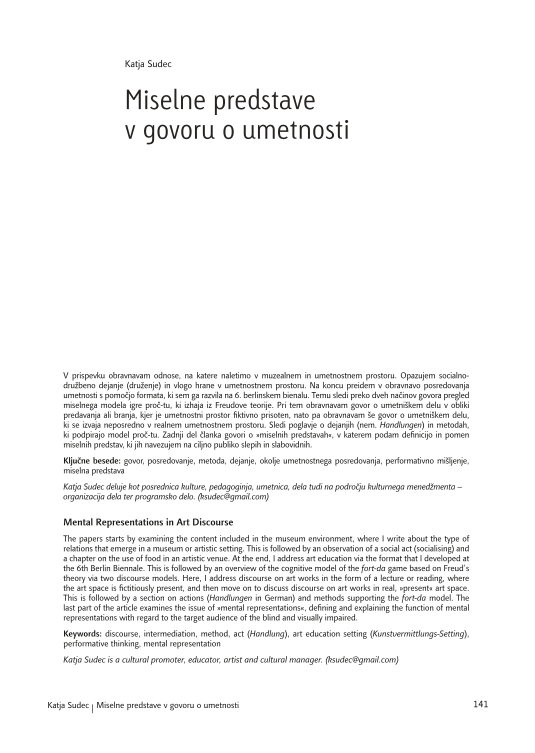The papers starts by examining the content included in the museum environment, where I write about the type of relations that emerge in a museum or artistic setting. This is followed by an observation of a social act (socialising) and a chapter on the use of food in an artistic venue. At the end, I address art education via the format that I developed at the 6th Berlin Biennale. This is followed by an overview of the cognitive model of the fort-da game based on Freud’s theory via two discourse models. Here, I address discourse on art works in the form of a lecture or reading, where the art space is fictitiously present, and then move on to discuss discourse on art works in real, »present« art space. This is followed by a section on actions (Handlungen in German) and methods supporting the fort-da model. The last part of the article examines the issue of »mental representations«, defining and explaining the function of mental representations with regard to the target audience of the blind and visually impaired.




